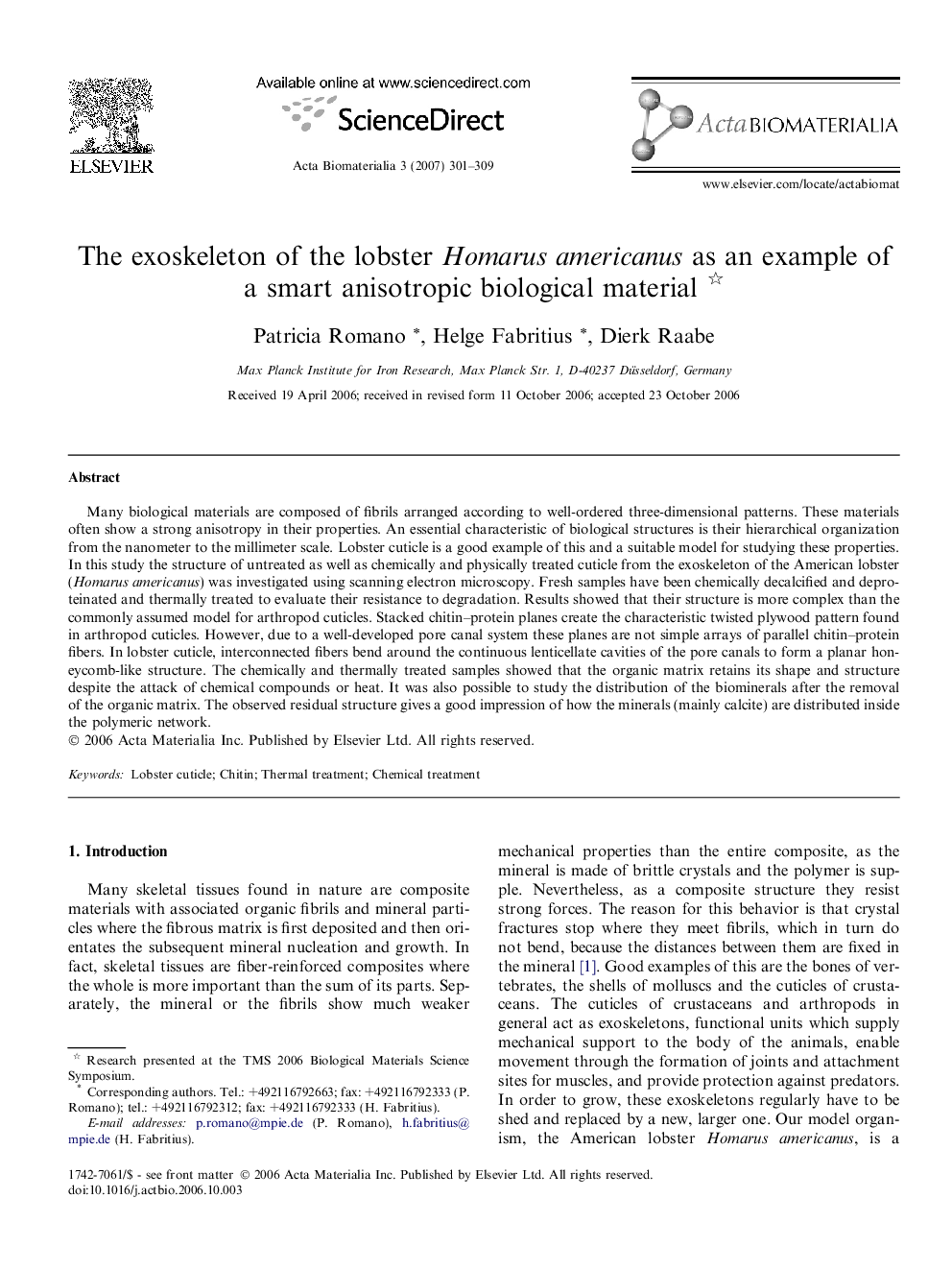| Article ID | Journal | Published Year | Pages | File Type |
|---|---|---|---|---|
| 2234 | Acta Biomaterialia | 2007 | 9 Pages |
Many biological materials are composed of fibrils arranged according to well-ordered three-dimensional patterns. These materials often show a strong anisotropy in their properties. An essential characteristic of biological structures is their hierarchical organization from the nanometer to the millimeter scale. Lobster cuticle is a good example of this and a suitable model for studying these properties. In this study the structure of untreated as well as chemically and physically treated cuticle from the exoskeleton of the American lobster (Homarus americanus) was investigated using scanning electron microscopy. Fresh samples have been chemically decalcified and deproteinated and thermally treated to evaluate their resistance to degradation. Results showed that their structure is more complex than the commonly assumed model for arthropod cuticles. Stacked chitin–protein planes create the characteristic twisted plywood pattern found in arthropod cuticles. However, due to a well-developed pore canal system these planes are not simple arrays of parallel chitin–protein fibers. In lobster cuticle, interconnected fibers bend around the continuous lenticellate cavities of the pore canals to form a planar honeycomb-like structure. The chemically and thermally treated samples showed that the organic matrix retains its shape and structure despite the attack of chemical compounds or heat. It was also possible to study the distribution of the biominerals after the removal of the organic matrix. The observed residual structure gives a good impression of how the minerals (mainly calcite) are distributed inside the polymeric network.
